Art in NYC: Chagall, Lissitzky, Malevich at the Jewish Museum
Russian Avant-garde art from the turbulent post-revolution years by the founders of People’s Art School in Vitebsk in 1918-1922 is open on September 14, 2018 – January 6, 2019
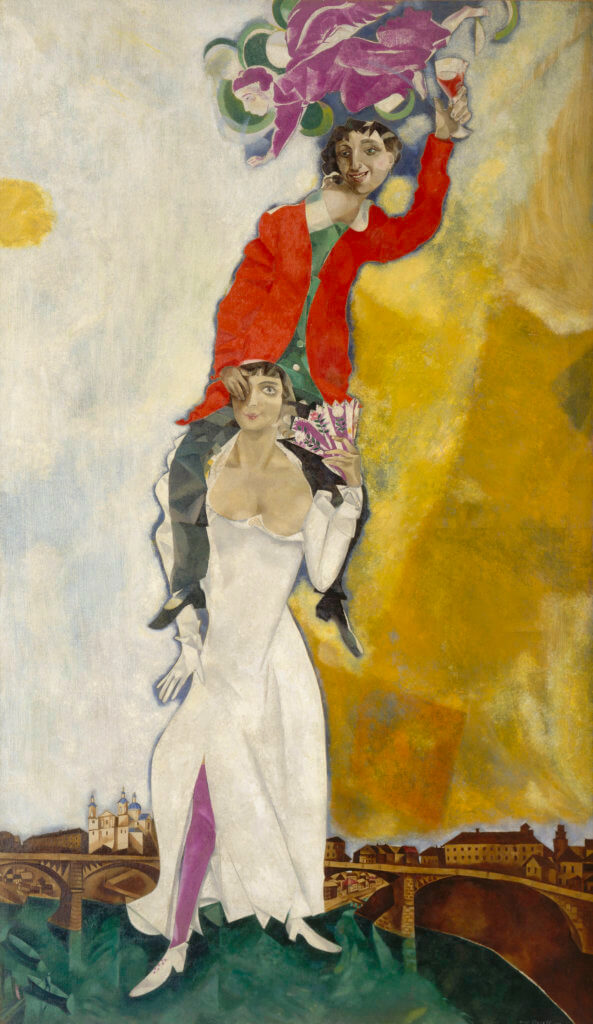
Marking a centennial from its opening, the history of People’s Art School in Vitebsk and the artworks by its world-famous founder, prominent teachers and students make an excellent tribute to the new art, new teachings and the stormy winds of the revolutionary time. The exhibition is collaboratively organized by the Centre Pompidou in Paris where it was shown through July 16, 2018 and the Jewish Museum in New York where it will be on view until January 6, 2019. The works included in the exhibition are from the major museums and private collections with some of the paintings, drawings and sketches traveling abroad for the first time from the regional museums in Vitebsk and Minsk, Belarus.
Marc Chagall’s brainchild inspired by the spirit of revolution and its promise of access and opportunity for all, the art school in provincial Vitebsk, a town with under a hundred thousand residents half of them Jewish at the time, brought together world-class artists and talented students from humbled backgrounds. Chagall’s vision was to combine various artistic movements and to design the curriculum stretching from the classical elements all the way to the contemporary approaches. El Lissitzky and Kazemir Malevich were invited to join the faculty together with other artists representing a range of art movements. Soon supremacists led by Malevich won the hearts of the students leading to Chagall’s leaving Vitebsk and embarking on other projects in Moscow.
The dynamic Russian Avant-garde artworks on view at the Jewish Museum tell a touching story of historical changes and disappearance of the old ways of life and old ways of thinking about art. While the school didn’t last long and was reorganized into a technical college after 1922, its short history tells a remarkable story of the excitement of the experiment and the power of creative expression.
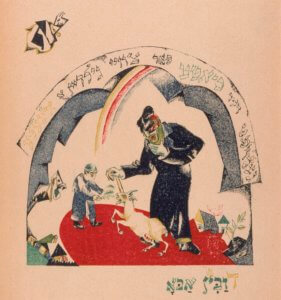
Mark Chagall returned to his native Vitebsk in 1918 as a commissar of arts for Vitebsk. By then he was a well-established modernist artist with the numerous exhibitions in Paris, Berlin, Moscow, and St. Petersburg. Like many artists of his time, he was excited about the promise of equal rights regardless of religion and nationality made by the revolution and was proud to be part of the “aesthetic arm of the revolution” as the modernist artists were known. However, on a personal level, he confessed that the Bolshevik’s orders scared him and that he was trying to stay away from politics. Thus accepting the position in a provincial Vitebsk provided an escape from the hustle and bustle of the capital.
Arriving in Vitebsk just in time for the first anniversary of October revolution, he enthusiastically led the local artists in producing engaging and colorful decorations and banners greeting the free spirit at every corner. The decorated city and the festivities can be seen in the film footage and photographs from the time in the first gallery of the exhibition.
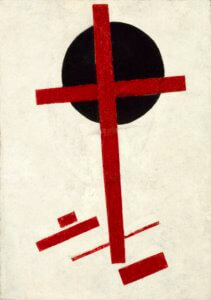
Chagall embraced an opportunity to provide art education to the children from working-class families with the opening of Vitebsk art school in January 2019. That year he invited El Lissitzky, another Vitebsk native and Kazemir Malevich along with his own teacher, Yehudi Pen, a classically trained figurative artist, to join school faculty.
The new regime gave the school a former banker mansion, but it still proved to be too tight a space for the giants of modern art. Combining sensible individualistic art found in Chagall’s work with the extreme abstract notions advocated by Malevich and Lissitzky under the same roof was a futile exercise. Plus the students deserted Chagall’s classes and gravitated to the teachings by Malevich. This led to Chagall’s leaving for Moscow to work on new projects for the State Jewish Chamber Theater. The school graduated its first and its last class in 1922.
The opening section of the exhibition projects soaring excitement and uplifting expectations. Highly optimistic Chagall’s “Double portrait with a wine glass” and his other works from 1918-1920 are paired with the illustrative art by El Lissitzky notably his Had Gadya cycle of lithographs telling a circular story of ever greater power taking over each lesser one with the revolutionary fire conquering them all.
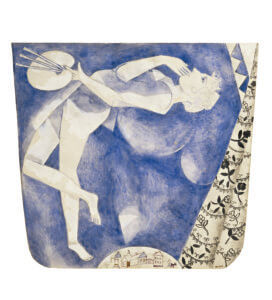
The progression to more abstract compositions of geometric forms and highly restricted color palette are on view in the “New Art: Lissitzky and Malevich” section of the exhibition. That leads to “Collective Utopia” section with uber-abstract art in full domination over figurative and individualistic expression. The distance between Chagall’s drifting lovers, flying figures and snow-covered roofs and ominously looking crosses, circles, and squares in the works by Malevich and Lissitzky was growing ever wider. Parting ways was the logical conclusion to the dissonance of artistic views. It is fascinating that these very different approaches of expression were developed within the same time window and were influenced by the same historical circumstances.
The art schools as the “epicenters of invention” in the words of the NYT are a known phenomenon. The People’s Art School short history is just one of such instances with the following 100 years after it closed its doors gave us time to sort out its developments and enjoy the diverse art that it inspired.
A series of public and family programs are scheduled in conjunction with the exhibition at the Jewish Museum.
Date: September 14, 2018 – January 2, 2019
Venue: 1109 5th Ave & E 92nd St, New York, NY 10128
Use Promo Code TMNTX (if applicable)
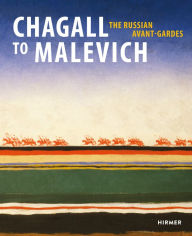
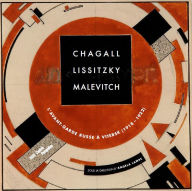
One thought to “Art in NYC: Chagall, Lissitzky, Malevich at the Jewish Museum”
Comments are closed.